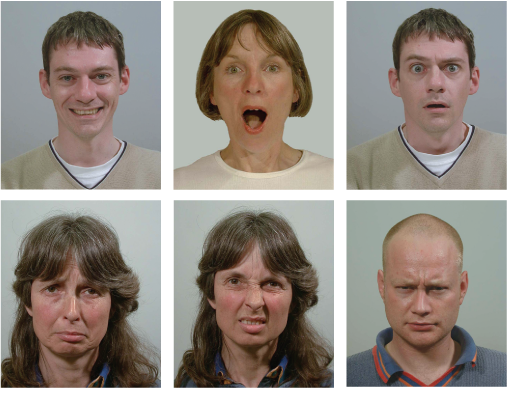2.2 Evidence for the universality of human emotions
Paul Ekman and his colleagues showed photographs of North Americans displaying a range of emotional expressions to people, such as the Fore of New Guinea, who had had virtually no contact with Westerners. They wanted to know which expressions the Fore would identify as (say) those of a man who had lost his child.
Why was it important that the Fore people had had minimal contact with Western culture?
To ensure that they had not simply learned about the relationship between the expressions in the photos and the emotions that the photos represented, via contact with Western culture.
The Fore did prove competent at identifying emotions in Western faces. Ekman and his colleagues also photographed responses to emotional situations in the Fore, and this time asked North Americans to assess them – which they did, also accurately. Ekman concluded that recognition and expression of emotions was shared across cultures, at least for the six emotions he felt were ‘basic’: happiness, surprise, sadness, anger, fear and disgust; see Figure 3.

But explanation was still needed for the fact that people from different cultures sometimes showed different expressions in circumstances where one would expect them all to show a particular emotion, such as sadness. Ekman suggested that this was because different cultures learned different ‘display rules’ for emotions. For instance, Japanese culture has a display rule that emotions such as anger or disgust must not be expressed in front of people of higher social status, whereas North American culture does not have such a rule. When Japanese and Americans were secretly observed watching a gory film, both showed facial expressions of disgust. When they were shown the film in the presence of a person with higher social status, the Japanese smiled, but the Americans still showed facial expressions of disgust.
Based on such findings, Ekman (1972, 2003) proposed his neurocultural theory of emotions. This suggested that certain human emotions were universal, but that the facial expression of these emotions could be influenced by social learning via local culture. (‘Culture’ is used here to mean practices or ways of thinking, so the term can apply widely, at different levels. Thus there could be ‘cultural’ differences between socio-economic classes, between men and women, and so on.)
All in all, therefore, sadness and anxiety have the same biological bases in all humans, and are experienced in fundamentally similar contexts – thus bad feelings are reliably aroused by losses, threats of losses, and the inability to reach important goals (Emmons, 1996).
However, culture does have an effect. It can affect what we regard as important goals or losses and therefore what triggers our emotions. Thus in Westernised societies some women may feel anxious and depressed at not being as thin as their culture considers desirable. In some Asian cultures, where male offspring are greatly prized, some women who give birth to one daughter after another may feel great despair and anguish. Cultural factors may also come into play in how acceptable people find it to display emotions and to admit to feelings, particularly negative ones. As diagnosis of emotional disorders is reliant on subjective report and assessment by interviewers, it is easy to see how cultural factors could impact on the diagnosis of problems like depression and anxiety (Section 4).
Our basic emotions, however, are those that all humans feel, and underlying them are brain structures and connections that are not just common to humans but have an ancient lineage, as explained in the next section.
